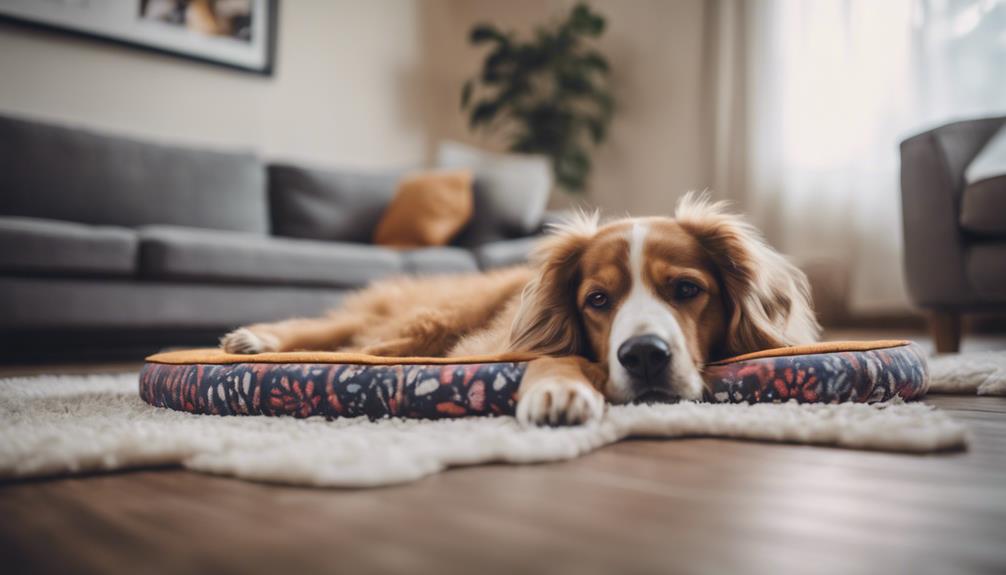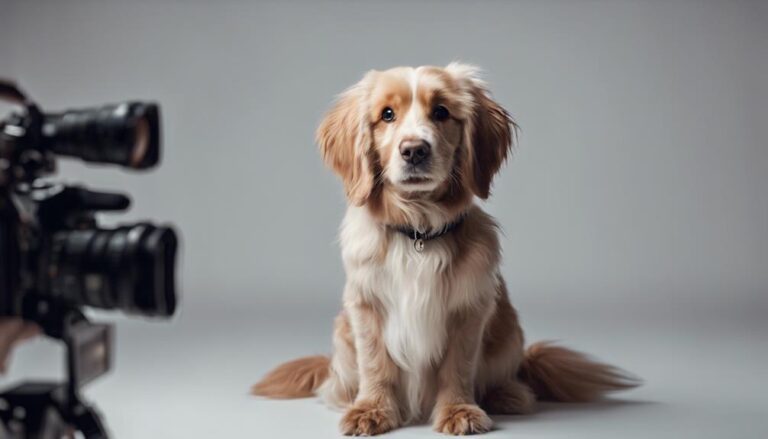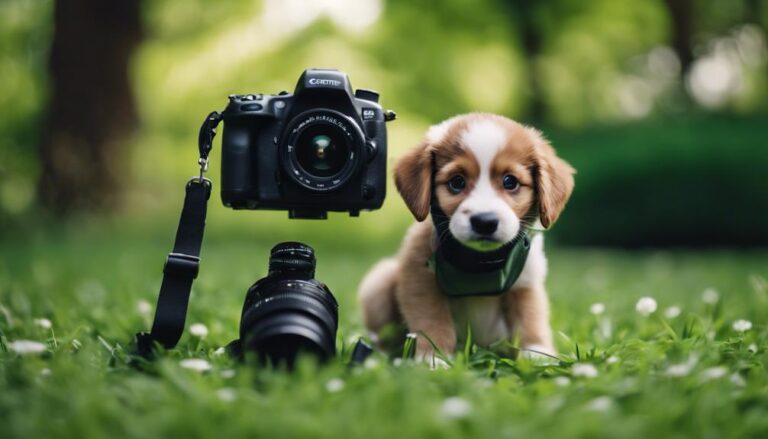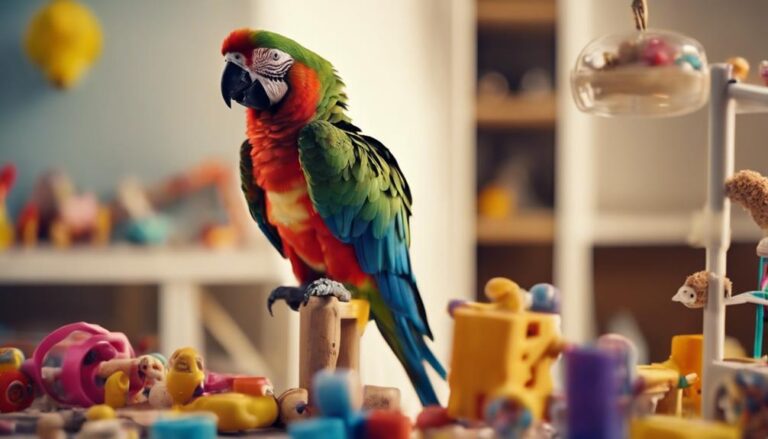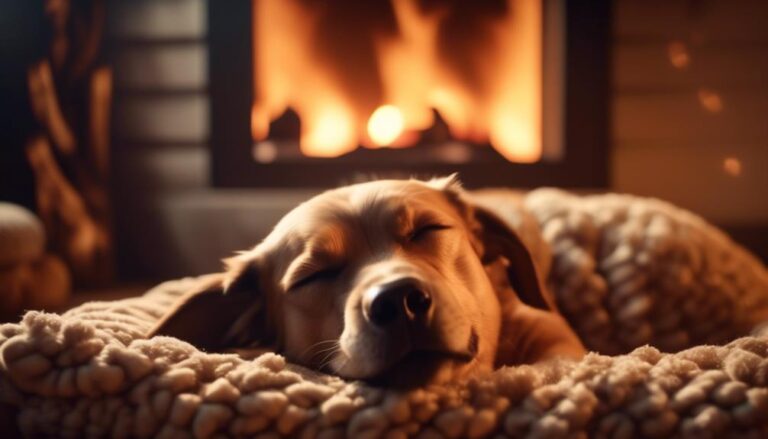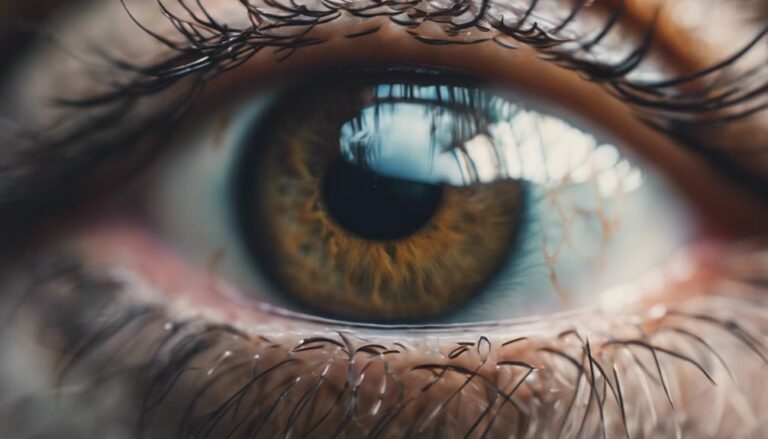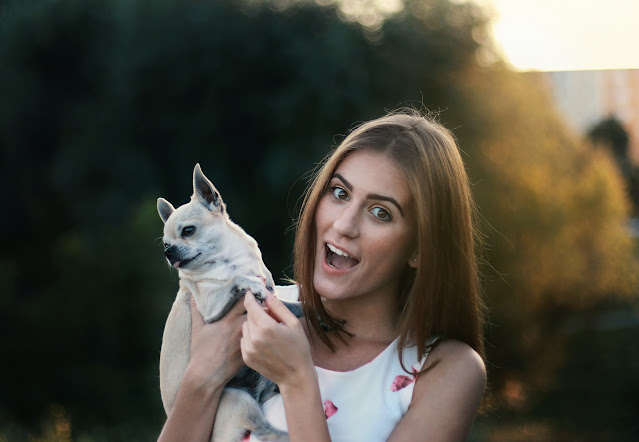Enhance your pet photography skills with indoor courses tailored to boost your business and creative talents. Learn marketing strategies, composition techniques, and masterful shot framing. Capture your pet's unique charm through expert guidance. Discover the equipment essentials and tips for outstanding pet photos indoors. Immerse yourself in editing techniques to make your images pop. Build a versatile pet photography portfolio and monetize your skills effectively. Explore your potential by delving into the depth of indoor pet photography courses.
Benefits of Indoor Pet Photography Courses
Indoor pet photography courses can enhance your skills and knowledge in capturing stunning images of your furry companions. By enrolling in these courses, you will learn valuable marketing strategies to promote your pet photography business effectively. Understanding how to market your services will help you attract more clients and grow your brand in the competitive photography industry.
Moreover, these courses will teach you essential composition techniques to create visually appealing pet portraits. You will learn how to frame your shots, utilize different angles, and incorporate creative elements to make your photos stand out. Mastering composition techniques is vital in producing engaging images that evoke emotion and resonate with viewers.
With the knowledge gained from indoor pet photography courses, you will be equipped to capture the unique personalities of pets and showcase their individuality through your photographs. Learning marketing strategies will enable you to reach a wider audience and turn your passion for pet photography into a successful business venture. Additionally, mastering composition techniques will elevate the quality of your work, setting you apart as a skilled pet photographer in a competitive market.
Choosing the Right Course for You
When evaluating which pet photography course is right for you, assess the curriculum to make sure it aligns with your skill level and learning goals. Look for courses that offer a good balance of essential knowledge and practical skills. If you are a beginner, seek courses that cover the basics of photography techniques, composition, and lighting. For more advanced photographers, contemplate courses that explore more specialized topics like pet portrait styles, working with different breeds, or advanced lighting setups.
Finding inspiration is also vital when selecting a pet photography course. Look for courses that emphasize creativity and encourage you to develop your unique style. Courses that include assignments or projects can help you apply what you learn and push your creative boundaries.
Another important factor to ponder is whether the course covers the use of editing software. Post-processing plays a significant role in modern photography, and knowing how to use editing tools effectively can take your pet photos to the next level. Look for courses that include modules on popular editing software like Adobe Lightroom or Photoshop, or offer guidance on editing techniques specific to pet photography. By choosing a course that covers editing software, you can enhance your images and create stunning pet portraits.
Essential Equipment for Indoor Pet Photography
You need to understand the importance of lighting for capturing stunning indoor pet photos. Consider different background options for your furry friends to make your images pop. These two elements are crucial for creating professional indoor pet photography.
Lighting for Indoor Pets
To capture high-quality indoor pet photos, proper lighting equipment is essential. When utilizing natural light, position your pet near a window to take advantage of soft, diffused light. This type of light can create a gentle and flattering glow on your pet's fur, enhancing their features. Alternatively, artificial lighting sources like softboxes or ring lights can provide important and adjustable lighting indoors. Experiment with different angles and intensities to find the best lighting setup that highlights your pet's unique characteristics. Remember, important lighting is vital for sharp, well-exposed images of your furry friends. Mastering the use of both natural and artificial light will elevate the quality of your indoor pet photography.
Background Options for Pets
Exploring various background options can greatly enhance the visual appeal of your indoor pet photography. When creating a pet portrait in indoor settings, consider using solid-colored backdrops to keep the focus on your furry friend. Neutral tones like white, gray, or beige work well to complement your pet's fur color and prevent distractions. For a more creative touch, you can opt for textured backgrounds or patterned fabrics that add depth to the image without overwhelming the pet. Experiment with different materials such as wood panels, faux fur blankets, or even wallpaper to achieve unique and eye-catching backgrounds for your indoor pet photography sessions. Remember, the background should enhance, not overshadow, the star of the show – your beloved pet.
Tips for Capturing Great Shots
Capturing great shots during indoor pet photography courses requires attention to lighting and angles. When it comes to pet posing techniques, try to capture natural movements and expressions. Encourage pets to interact with toys or treats to achieve candid shots. Experiment with different angles to find the most flattering perspectives for each pet, whether it's a close-up of their face or a full-body shot.
In terms of editing software comparison, there are various options available, each with its own features and capabilities. Popular choices include Adobe Lightroom, Capture One, and Luminar. These tools can help enhance colors, adjust exposure, and remove any imperfections in your photos. However, remember that editing should complement the original shot rather than completely alter it.
To capture great shots during indoor pet photography courses, make use of natural light whenever possible. Position your pet near a window or under a soft light source to avoid harsh shadows. Consider investing in artificial lighting equipment for more control over the lighting conditions. Additionally, be patient and ready to take multiple shots to ensure you capture the perfect moment. By following these tips and techniques, you'll be well on your way to creating stunning pet photos during your indoor photography courses.
Editing Techniques for Pet Photos
When editing pet photos, remember to focus on color correction basics to make your images pop. Background removal tips can help eliminate distractions and highlight your furry friend. Enhancing fur texture can add depth and detail to your pet portraits.
Color Correction Basics
To enhance the quality of your pet photos, mastering color correction basics is essential for achieving vibrant and accurate results. When editing your pet photos, understanding color grading techniques and photo retouching can greatly enhance the overall look of your images. Make sure to adjust white balance settings to get the correct tones in your photos. By fine-tuning saturation levels, you can make your pet's fur or eyes pop with color. Remember that subtle adjustments can make a big difference in the final outcome of your pet photography. Practice using these color correction basics to bring out the best in your pet photos and create mesmerizing images that truly stand out.
Background Removal Tips
Mastering background removal techniques is key to ensuring your pet photos stand out with a clean and professional look. When engaging in photo editing for portrait photography, pay attention to details like fur or whiskers that may require special care during the background removal process. Use tools like the background eraser or magnetic lasso for precise selections and smooth edges. Remember to adjust the feathering to blend your pet seamlessly into a new background. Keep the focus on your furry friend by removing distractions in the background, enhancing the overall composition of your pet portraits. With practice and attention to detail, you can achieve polished and eye-catching pet photos through effective background removal techniques.
Enhancing Fur Texture
Improving fur texture in pet photos can elevate the visual appeal and overall quality of your images, creating a more engaging and lifelike portrayal of your furry companion. To achieve this, start with grooming tips to make sure your pet's fur is clean and well-maintained. Experiment with posing techniques that showcase the texture and volume of the fur. When capturing the image, use lighting tricks to emphasize the fur's natural shine and dimension. In post-processing, utilize editing secrets like enhancing contrast and clarity to make the fur appear more defined and touchable. By paying attention to these details, you can enhance the fur texture in your pet photos, resulting in captivating and professional-looking images.
Building a Portfolio of Pet Photography
When starting to build your portfolio of pet photography, focus on capturing authentic moments that showcase the unique personalities of the animals. This approach will help you create a collection of images that truly stand out and resonate with viewers. To successfully build your pet photography portfolio, consider the following:
- Experiment with Different Pet Portrait Styles and Lighting: Explore various styles of pet portraits, from candid shots to posed images. Experiment with natural light, artificial lighting setups, and creative techniques to capture the essence of your furry subjects. Lighting plays a vital role in highlighting textures and features, so pay attention to how it enhances your photos.
- Incorporate Creative Posing and Editing Techniques: Encourage playful interactions between pets and their surroundings to add interest and dynamism to your shots. Experiment with different angles, compositions, and post-processing methods to bring out the best in your images. Creative editing can enhance your pet photography, allowing you to create unique and engaging visuals.
- Focus on Expressions and Emotions: Aim to capture the genuine emotions and expressions of the animals you photograph. Whether it's a look of curiosity, joy, or mischief, these authentic moments can create powerful connections with your audience.
- Showcase Diversity and Range: Include a variety of pets, breeds, and environments in your portfolio to demonstrate your versatility as a pet photographer. Showcasing a diverse range of subjects will attract a broader audience and showcase your skills in capturing different personalities and settings.
Monetizing Your Pet Photography Skills
To capitalize on your pet photography skills, consider exploring various avenues for monetization in the industry. One option is to offer online workshops where you can teach aspiring pet photographers your techniques and insights. This not only generates income but also establishes you as an authority in the field. When pricing your workshops, consider factors like the value you provide, the market demand, and your level of expertise. Offering different pricing tiers can attract a wider range of clients.
Utilizing social media is important for monetizing your pet photography skills. Create a strong online presence by showcasing your work, engaging with followers, and sharing valuable content related to pet photography. This can attract potential clients and increase your visibility in the industry. Effective client communication is also key. Respond promptly to inquiries, be professional in your interactions, and guarantee client satisfaction to build a loyal customer base.
Consider offering packages that include photo sessions, prints, and digital files. This can appeal to clients looking for a thorough pet photography experience. Additionally, partnering with pet-related businesses like groomers or pet stores can help expand your reach and attract new clients. By implementing smart pricing strategies, leveraging social media, and maintaining excellent client communication, you can successfully monetize your pet photography skills.
Frequently Asked Questions
Can Indoor Pet Photography Courses Help Me Improve My Photography Skills in General, or Are They Specifically Tailored to Pet Photography?
Improving your photography skills can benefit from specialized courses, like indoor pet photography. While these courses focus on pet photography techniques, they also enhance your general skills, such as composition, lighting, and capturing unique moments.
Are There Any Specific Requirements or Qualifications Needed to Enroll in an Indoor Pet Photography Course?
To enroll in a course, qualifications and requirements vary. Some programs may need prior experience or basic photography skills, while others welcome beginners. Check each course's details to confirm you meet the necessary criteria.
How Long Do Indoor Pet Photography Courses Typically Last, and How Often Do They Meet?
Typically, indoor pet photography courses last for a few weeks to a couple of months. They usually meet once a week for a few hours. Duration and frequency may vary depending on the specific course and instructor.
Do Indoor Pet Photography Courses Cover Different Types of Pets, or Are They Mainly Focused on Dogs and Cats?
When learning about photography skills for pets, courses often cover a variety of animals, not just dogs and cats. You can expect to gain experience capturing different pet types, enhancing your skills in photographing diverse subjects.
Are There Any Opportunities for Hands-On Practice or Real-Life Photo Shoots Included in Indoor Pet Photography Courses?
For hands-on practice in photography, real-life photo shoots are often included in courses. These opportunities provide valuable experience and a chance to apply your skills in a practical setting, enhancing your learning process.
Conclusion
Now that you have learned the advantages of indoor pet photography courses, how to select the suitable one for you, necessary equipment needed, suggestions for capturing great shots, editing methods, creating a portfolio, and monetizing your skills, you are ready to start on your pet photography journey. Remember to practice, be patient, and enjoy capturing the distinctive personalities of our furry companions. Happy snapping!

